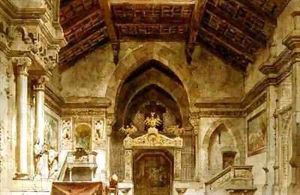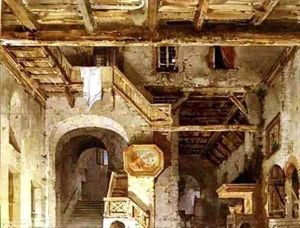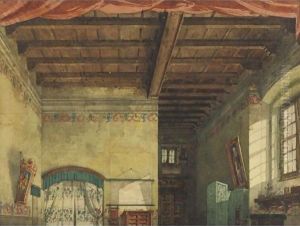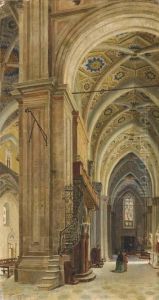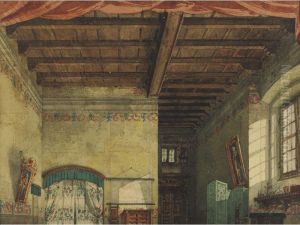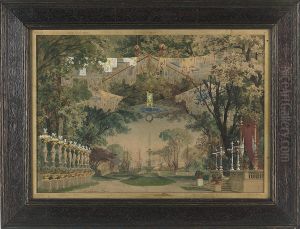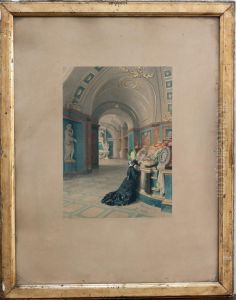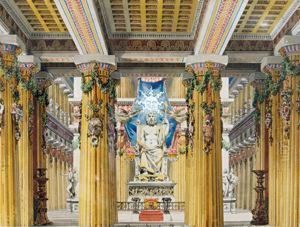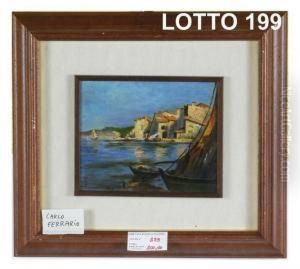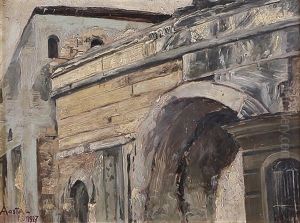Carlo Ferrario Paintings
Carlo Ferrario was an Italian scene designer, painter, and engraver, known for his significant contributions to the world of theater during the 19th century. Born on June 9, 1833, in Milan, Italy, Ferrario developed an interest in the arts at a young age. He was part of a family deeply involved in the theatrical scene, which influenced his career path. His father, Alessandro Ferrario, was a scene painter as well, and his mother, Giuseppina Foppa, belonged to a family of musicians.
Carlo Ferrario's career flourished at La Scala, Milan's prestigious opera house, where he worked as a chief scenic designer. La Scala was not only a hub for opera but also a center for innovation in stage design and theatrical production techniques during that period. Ferrario's design work was known for its meticulous detail and historical accuracy, which contributed to the grandeur and authenticity of the operatic performances. His sets and costumes often displayed a high level of craftsmanship and artistic skill, bringing to life the narratives and characters of the operas.
Throughout his career, Ferrario collaborated with some of the most prominent composers and artists of his time. His legacy includes the creation of stage designs for Giuseppe Verdi's operas, among other notable works. Ferrario's influence extended beyond the borders of Italy, as his designs were used in productions across Europe and beyond.
Ferrario was not only a practitioner but also an educator. He taught at the Brera Academy in Milan, where he imparted his knowledge of scenic design to future generations of artists. His works were documented in various publications, including a treatise on theater design that has been used as a reference by theater professionals and historians.
Carlo Ferrario passed away on February 9, 1907, in Milan. His contributions to scenic design have left a lasting impact on the visual aspects of theatrical production. Even after his death, his legacy continued to influence the aesthetics of stage design in the operatic world. His dedication to the art form and his innovative designs remain a source of inspiration and study for those interested in the history of theater and scenic design.
